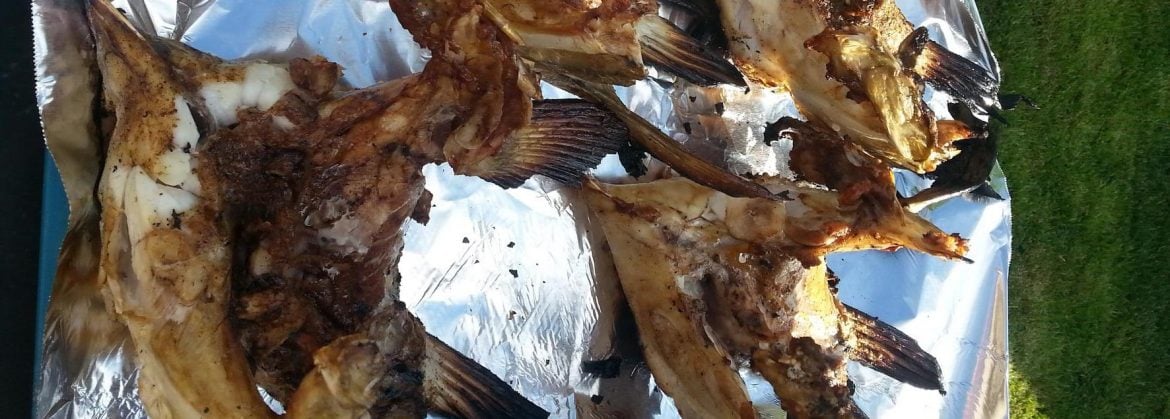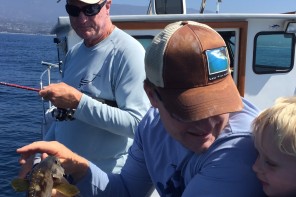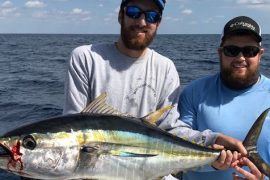Let’s face it; fishing is not a cheap endeavor. Typical charter boat costs average about $125 to $150 per person. Catching a fish isn’t even a guarantee. So when you do catch fish, and bring them home for dinner, you owe it to them and your wallet to make the most of your catch. That is where the fish cheeks and collars come in.

Most people, after catching a fish, typically just filet the fish and discard the rest. If you are one of these people, STOP DOING THAT! There is so much you are missing out on and you are arguably throwing the best parts away. You should keep the fish cheeks and collars! If you are smart you can even snag these from the rest of the guys on the boat without much protest.
Cheeks
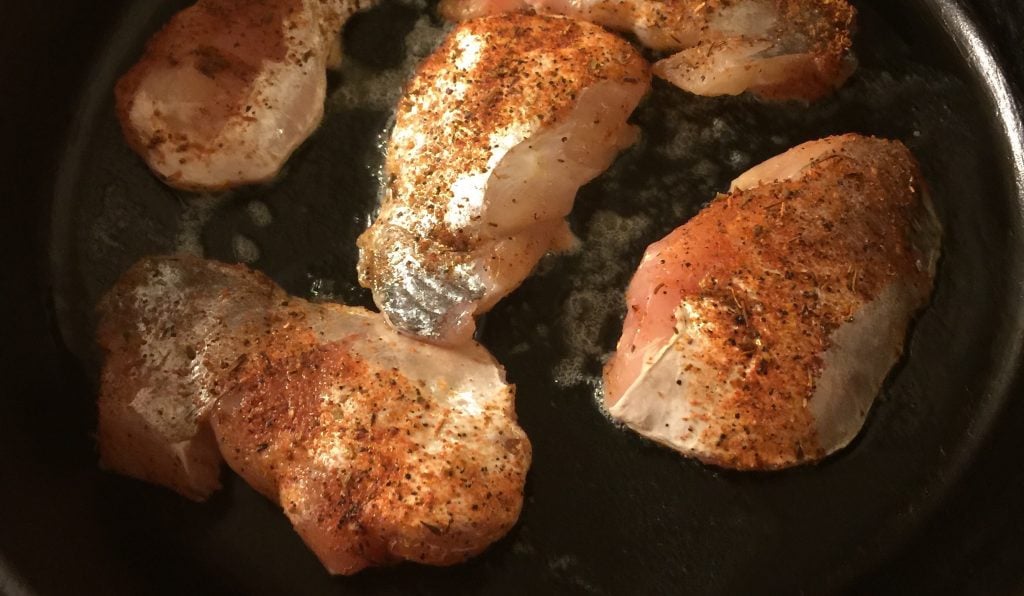
Some of you might be familiar with pork cheeks, aka hog jowls. Well guess what, fish have these too and they are just as tasty. The cheeks are located on the head right around the eyes, as can be seen in the highlighted yellow area. The process is pretty straight forward and only requires a sharp filet knife. Feel the area immediately behind the eyes and you will feel where the bone stops and the flesh begins. Insert the filet knife up under the skin and work in a circular fashion to loosen up the cheek meat from the head. Then simply remove the flesh by cutting it out and then remove the skin. These can be prepared a multitude of ways from grilling to sautéing, depending on the fish you’ve caught.
Collars
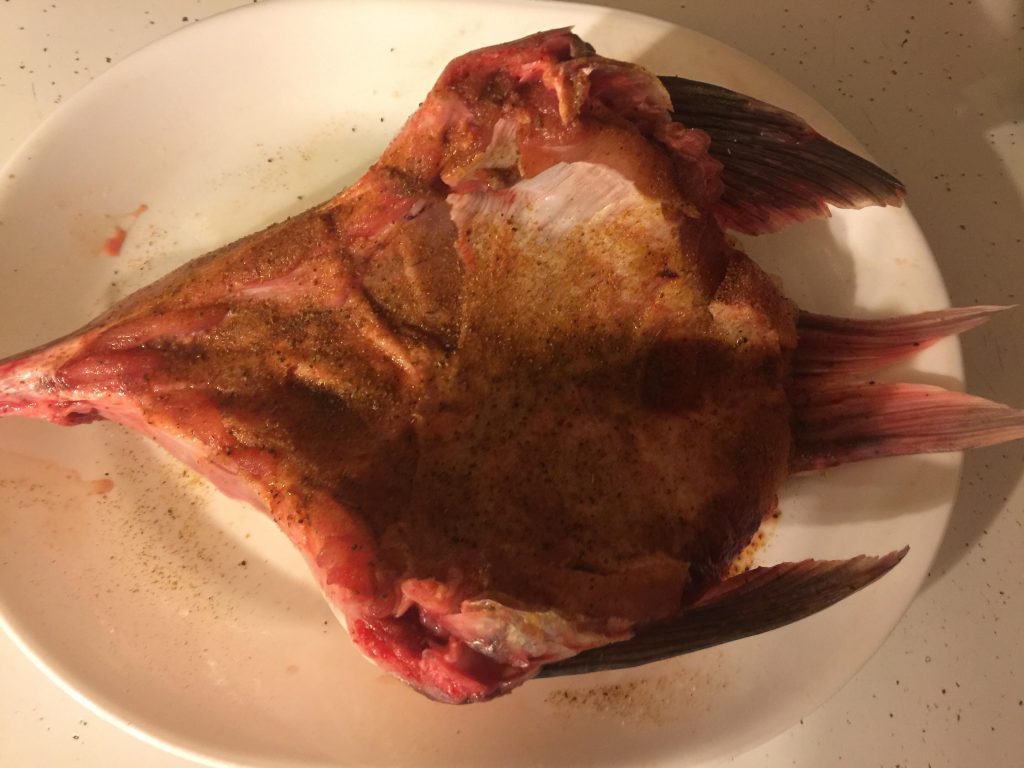
No, these do not call for starch, and yes they are worth the work. As with the cheeks, the collars are another overlooked portion of fish. These take a little more effort but result in more meat. The “collar” is the area of the fish directly behind the gills back to where one would typically start to filet the fish. This also includes as far forward as the chin, where the gills come to a point. This can be seen in the area above, highlighted in blue. The trick to removing the collars from the head is to have a pair of wire cutters and a sharp filet knife. First you need to take the wire cutters and clip the narrow point where the gills come together under the head. Next remove all gills from the fish. There is a narrow spot where the gills come to the top of the head; carefully cut away the flesh to expose the bone. Then use the wire cutters to sever the bone until your collar resembles a “U” shape. From here you have two options, cook the entire collar or split it in half and cook them skin side lying down.
Whichever method you chose one of the most important things to do, or actually not do, is do not scale the collar. Keep the scales on the fish as this helps protect the meat underneath the skin when you cook it. For the best results I like to leave the collars whole and grill them standing up so that the fat located in the belly and fins can help self baste the fish. The cooking times will vary depending on the size of the collar. The best meat can be located attached to the pectoral fins and along the belly.
Cooking them up
On our most recent fishing trip we ended up with some nice large striped bass (more on that adventure here). You can’t go wrong with sprinkling some J.O. No. 1 seafood seasoning on the fish cheeks and collars, I like to grill the collars and sauté the cheeks in a little butter, just like a scallop.
You’ve never heard of J.O. Spice? Well if you’ve lived in Maryland your entire life and eaten blue crabs chances are you probably have tried it, you just didn’t know it. Most restaurants in the Mid-Atlantic use J.O. Spice instead of the other nationally known brand, Old Bay. If you don’t have access to J.O. or even Old Bay, use what you can find regionally such as Everglades Seasoning in Florida or Monterey Seafood Seasoning in California. When in a pinch I have been known to just sprinkle a little seasoned salt on them.
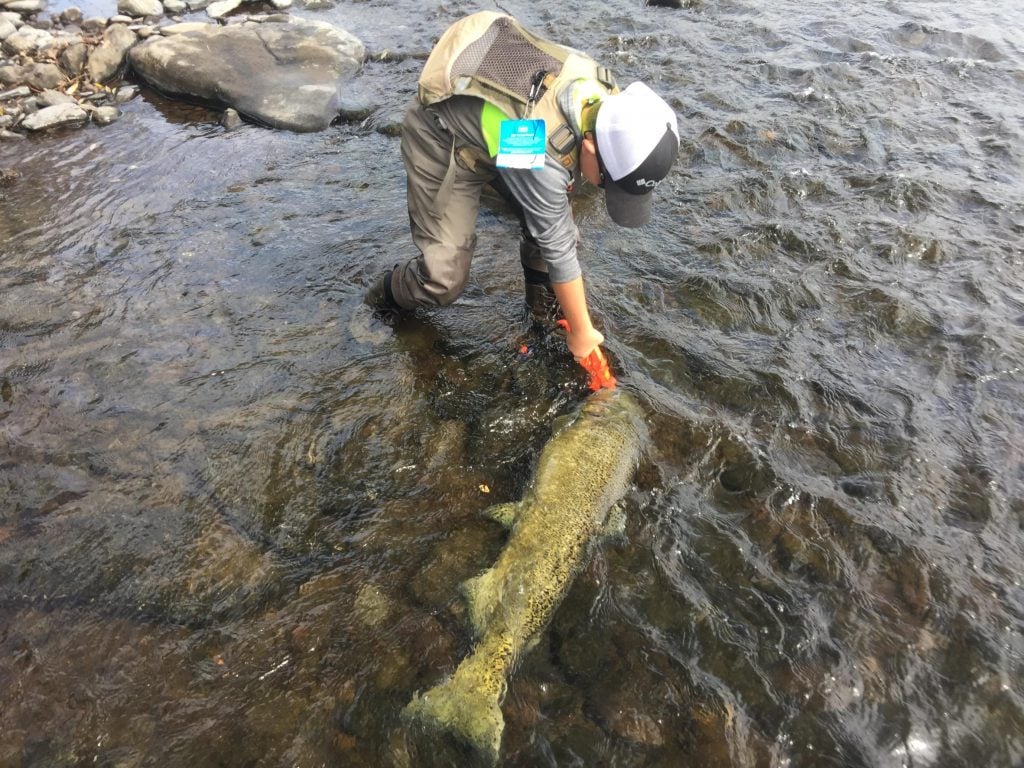
Haven’t caught any striper? No problem. Fish cheeks and collars are equally as delicious from species such as tuna, cod, grouper, walleye, salmon and even large trout. The rule of thumb I have established is that if the filet is tasty then the fish cheeks and collar are going to be even better. Use whatever spices, sauces or cooking methods you traditionally use on the filet to cook the cheeks and collars. Bread cod and walleye cheeks for fish nuggets or grill up a tuna collar and marinate it with soy or teriyaki sauce. You won’t regret it.
So there you have it, how to utilize some prime pieces of fish you’ve probably never heard of and have been throwing away. Not only are they tasty but they also help you waste less of the fish. The next time you find yourself out on a charter boat with your friends and the first mate starts to filet the fish you have two options; tell your friends all about cheeks and collars or keep quiet and ask the first mate for all the heads to take home for yourself; the choice is yours.
For additional recipes and insight in to fish cheeks and collars, check out the links below.
Hank Shaw:
(http://honest-food.net/salmon-collar-recipe/) and (http://honest-food.net/grilled-fish-collars-recipe/)
Field and Stream:
Guest Blogger Shawn McCardell
About Fin & Field
#FinandField #FYNA #DreamBig2016
Fin & Field is all about finding your next adventure. We’re working hard to provide the most comprehensive listing of services, reviews, and far reaching community available to help you take the guesswork out of planning your next adventure.
We believe in the ethical pursuit of hunting and fishing adventures and support taking from the land only what you can use and leaving it in better shape than you found it.
Tight Lines & Happy Hunting!
Visit us at www.finandfield.com

